Museums
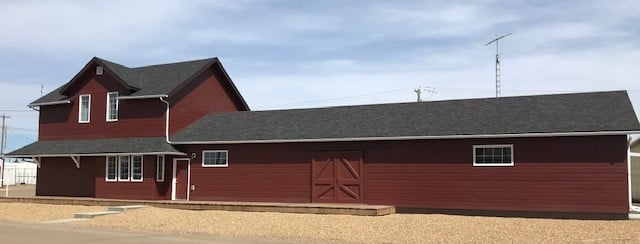
The Museum Society was founded under the Societies Act in 1998. The building itself was originally Castor's CPR station which was moved to its present site in the same year. It houses artifacts documenting the settlement and growth of Castor and District from its earliest beginnings.
Two stained glass windows, reputed to have been rescued from Chicago Stock-Exchange during the Great Chicago Fire of 1871, distinguished the lobby. It also houses an extensive collection of photographs of people and events from Castor's earliest years. If you want to sit and read the stories of people who lived in Castor, or the memoirs of local men who served in the armed forces from the Boer War to the Korean War, take a seat and learn of their experiences. Perhaps one of your ancestors is in these pages.
To the right you can find exhibits portraying life as it would have been on a visit to the hairdressers, the Castor hospital and even the dentist's office in days gone by. You can also sample early issues of The Castor Advance, books and magazines, or look at some of the amazing devices, which brought music and entertainment to lonely homesteads and farms. Also in this section you can find features from Castor's early landmark buildings, most of which were lost to fires. You can also find some examples of amazing pioneer outdoor wear.
To the left of the lobby you can view ladies' fashions from the early 1900's to the 1930's and wonder at the care that it must have taken to keep such clothing clean and fresh when all washing was done by hand with soap in a tub. On the other hand, you can marvel at the delicate elegance of these stylish outfits. In this exhibit you can also find examples of original military uniforms donated by local people who served in various branches of the armed services.
In the stairwell, sports uniforms and trophies show how sports teams lent prestige to prairie towns like Castor and provided a major source of entertainment. Fiery local rivalries flourished in ball, curling and most of all, hockey.
The upstairs shows typical scenes from a fairly well-to-do Castor house around 1915 to 1920, with a complete kitchen, dining room, sitting room and bedroom fully furnished with period items donated by local families.
The museum is open 2:00-4:00 every Thursday, Saturday and Sunday from the beginning of April to the end of October.
For museum tours on other days/times, please call:
Walter Pickles: 403-882-2553
Don Sisson: 403-323-0359
Mike Bain: 403-741-6202
John Wright: 403-882-3271
Fran Cox: 403-882-3981

Why save that dusty old relic?
Wooden grain elevators were once common & unique prairie landmarks; visible for miles they existed nowhere else in the world. When first built, they voiced the status of ambitious, fledgling towns as significantly as cathedral spires did in medieval Europe. It would be a shame to allow such distinctive and striking landmarks to disappear entirely from the landscape, existing only as fading memories in history books. They are distinctively Canadian too: school children all over the world recognize elevators on the prairies as Canadian icons, much like Mounties in red coats, or lumberjacks in checked shirts. Preserving such parts of its culture helps a society to feel a sense of identity: of where we have come from, who we are, and what we should therefore become.
Our Provincial Historic Resource Elevator is one of only eleven or so in Alberta that are under the protection of a preservation society today. It cannot be missed as one drives by Castor on Highway 12. In 1999 there were approximately five hundred wooden grain elevators in Alberta. Today very few survive, and those are either quite new or are slowly falling into dereliction. Few currently enjoy the protection of preservation groups.
Sceptics may argue "why go to all this trouble just to save a dusty old grain elevator?"
The Castor & District Museum Society has envisioned a future where virtually all of these structures will have disappeared, and a commonplace elevator will then become a unique artifact, a heritage building as significant historically to the economy of this Province as any city-centre sandstone building.
Our elevator exhibit wood and iron technology is from the early nineteen hundreds and marks the very beginnings of fixed settlement in Alberta. Few historical societies have enjoyed the luxury of preserving such early evidence to show future generations "how it all began".
Usually the sceptics who doubt the value of preservation have lived so close to elevators all their lives, that they have become blinded by them by familiarity, or embittered by perceptions of large grain companies who exploited the small farmer. But people are not all the same. When Castor's skyline changed forever, its three other elevators disintegrated into debris and dust before the onlookers, two old farmers were heard to agree, "It's a good thing the Museum preserved that last elevator. It's the oldest, you know. I remember delivering my first load of grain there when I was a kid."
Perhaps these words are hopeful signs that minds can change as radically as the prairie skyline.
By virtue of its age and original condition Castor's Alberta-Pacific elevator became a Provincial Historical resource in 2004, enabling the Museum Society access to Government funds and guidance in it preservation.
The Grain Elevator is part of the Castor & District Museum Society.
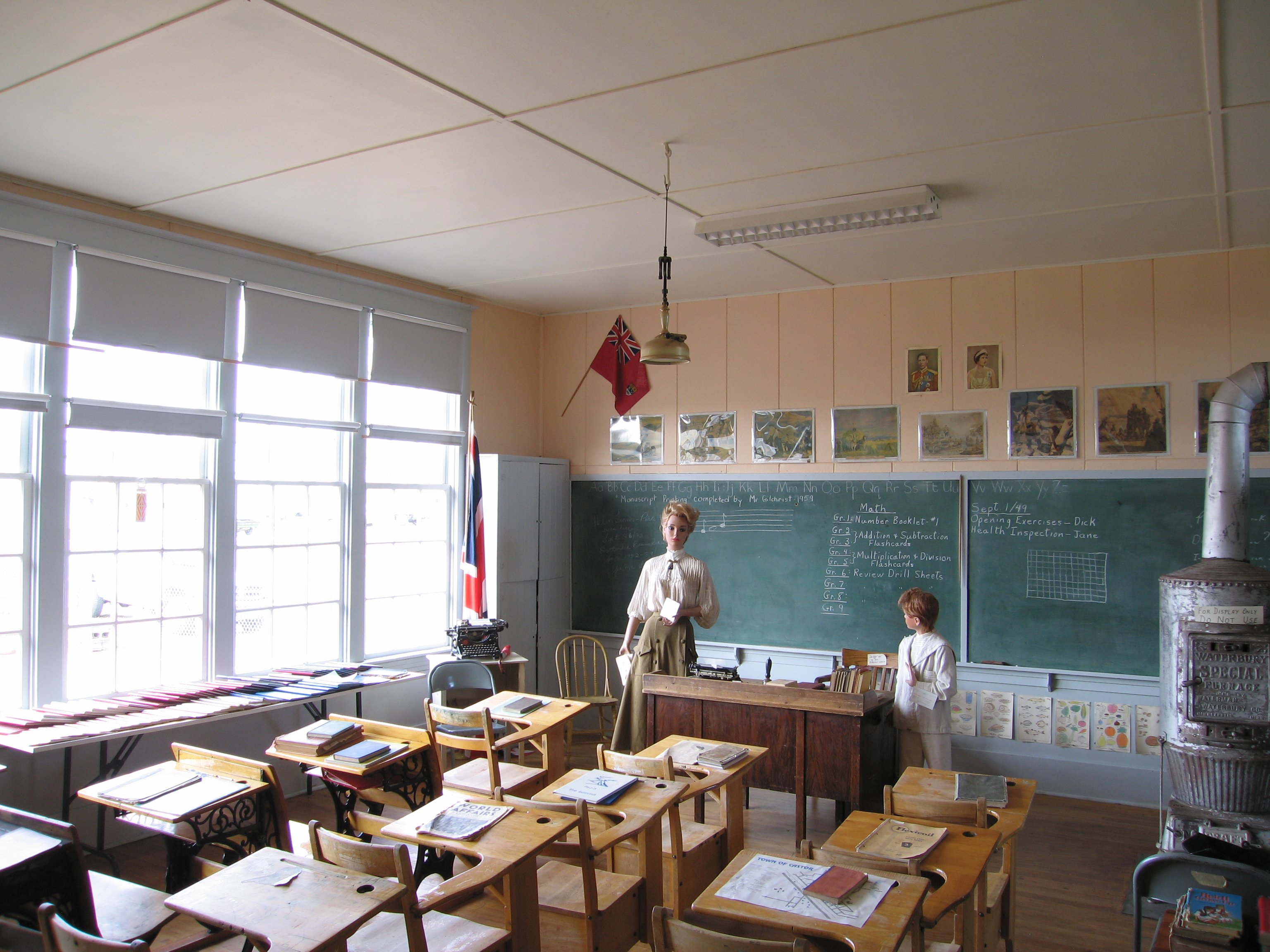
We think that our school is the most authentic and complete example of its kind, illustrating how education was delivered from the 20th century's earliest decades until the 1950's. Its excellent and original condition is enhanced by authentic furniture, displays and period school texts.
Beaver School once served the needs of students who lived in the Beaver district, roughly 10 miles north and four miles east of Castor, from 1919 to 1959. In 1939 it became part of the Castor School Division, which administered eighty-one school districts, each of them with its own little school. Beaver was the last of these to be closed. Through the efforts of members who once attended the school, it was moved to Castor on September 8, 1993 to become part of the museum's display.
Genealogists may find evidence of family members in the old registers and yearbooks at the back of the room. Life at many of the Castor School Division's one-room schools is also recorded in the extensive collection of school photographs.
The Beaver School is part of the Castor & District Museum Society.
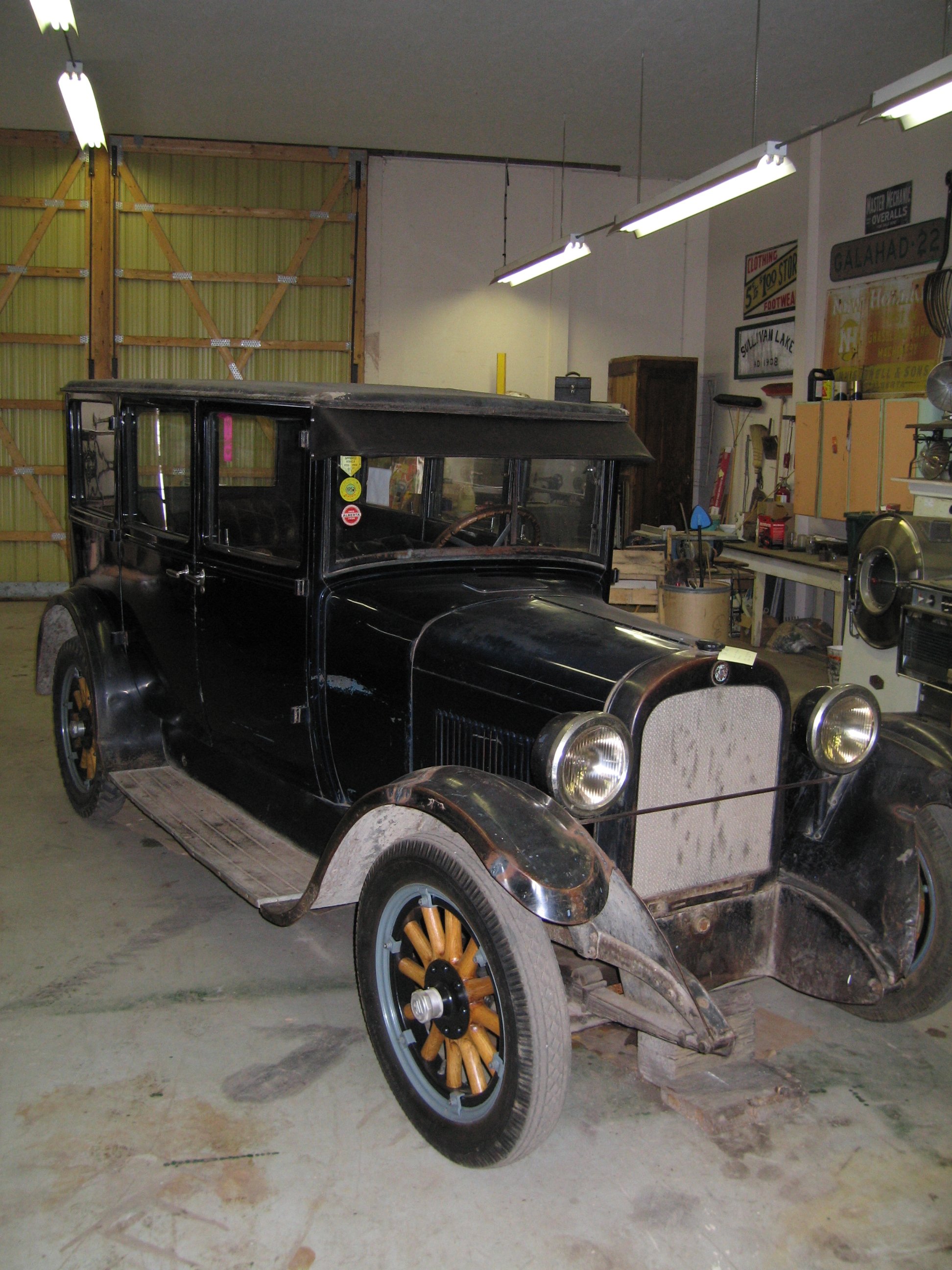
The shed houses running vehicles from the 1920's to the 1950's, some of which have interesting local histories. Mr. John Grove purchased our original and un-restored Dodge Brothers sedan in 1926 at Parr Motors, a dealership that used to stand just a block to the north, where Castor's Post Office can now be found. John Grove's family returned the car to Castor in 2003 and it has run at local events and parades. Castor's 1946 Saskatoon Fire Engine and a running example of a 1950's Farmall tractor complete the running exhibits. At the back of the shop is a very early I.H. wooden threshing machine. A collection of early buggies, sleds and an extensive variety of hand tools, foundry, machine tools and implements round out this display.
Outside, you can find many of the implements local farmers used to till, seed and harvest the land, giving a clear impression of how much labour and time was invested in a crop in days gone by. At the south end of the compound is an early backhoe mounted on a GM chassis. Much of Castor's water and sewer infrastructure was made possible with this machine.
Completing this display at the east end of the compound are a variety of buggies, grain wagons and tractors with names from the past such as Minneapolis Moline and Oliver and MCormick Deering. In the compound and to the east, we also have very early examples of a road grader, swathers and mower-binders.
The Machine Shop is part of the Castor & District Museum Society.
All Saints' Church, 1910
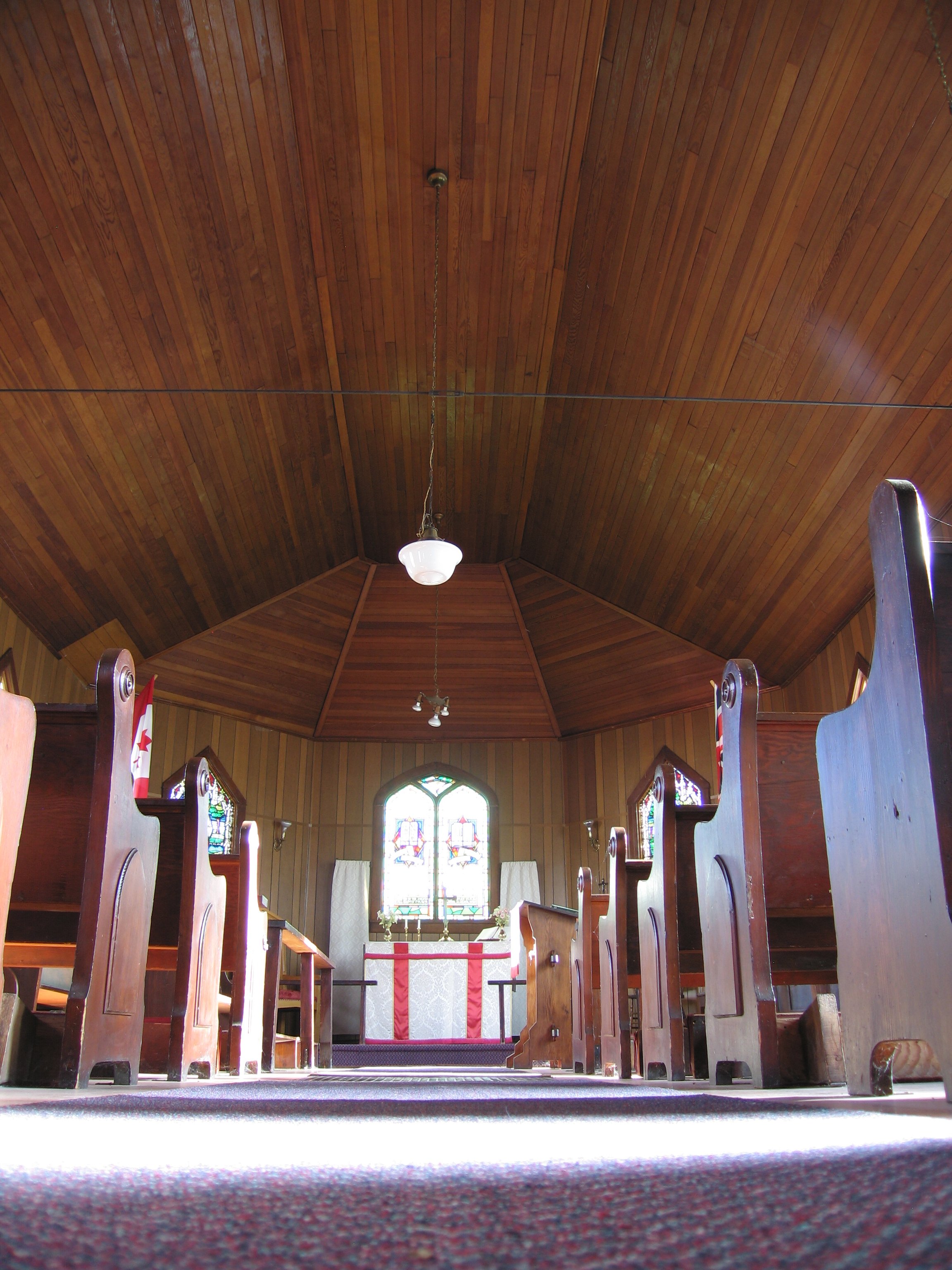
All Saints' Church is a small gem of a church and is a significant, historic landmark in the Town of Castor. It was one of the first buildings to be erected in the Town and certainly its very first church. Its shape can be distinguished in some of the very earliest photographs of Castor as it emerged from empty prairie during 1910-11. It was built in the spring of 1910 and was originally erected on a site donated by the CPR on Maple Street at the cost of $480 form funds donated by the Society for the Propagation of the Gospel, London, England.
The church is also noteworthy because it was built by the Rev. Martin W. Holdom (1909-12) and his congregation. The first Anglican church services had previously been administered from Stettler in a small sod church from July 1909 to October 1909 when the Rev. Martin Holdom, a young curate from St. Peter's Church in Leicester, England arrived.
The original sod church had become untenable and so he organized the congregation and secured funding to build this church in the spring of 1910. When complete, the Lord Bishop of Calgary dedicated it on March 6th of that year.
The church became All Saints' Church in memory of the young Rev. Holdom's school, All Saints' School in Bloxham, Banbury, Oxfordshire and also because the first service he held in this building was on the eve of the festival of All Saints on November 1st 1910. The Rev. Holdom's letters & diaries became the subject of a book published in 1996 by the Historical Society of Alberta entitled A Preacher's Frontier.
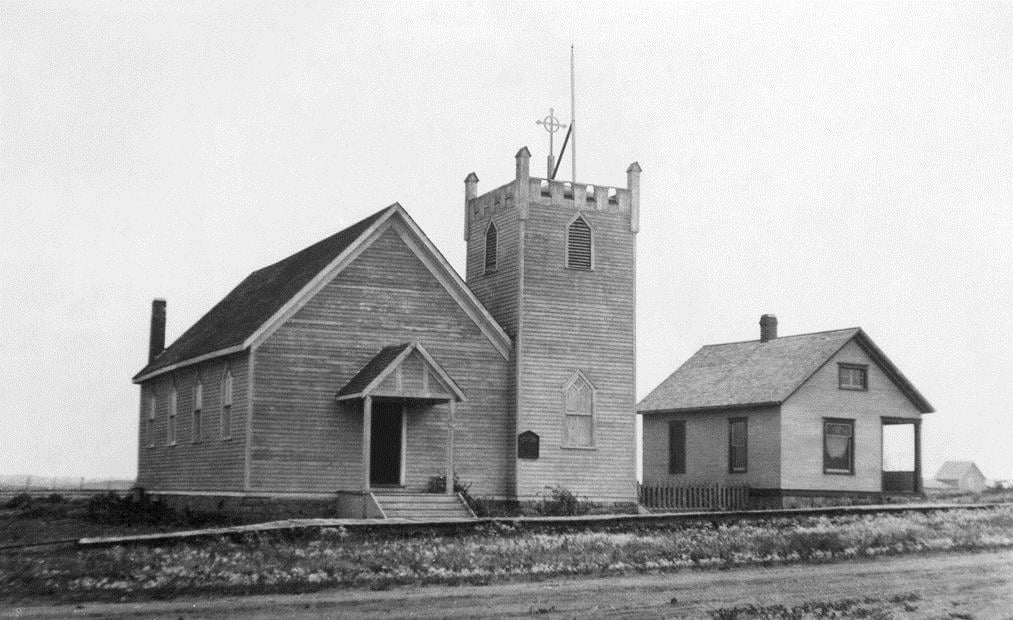
All Saints' 1911
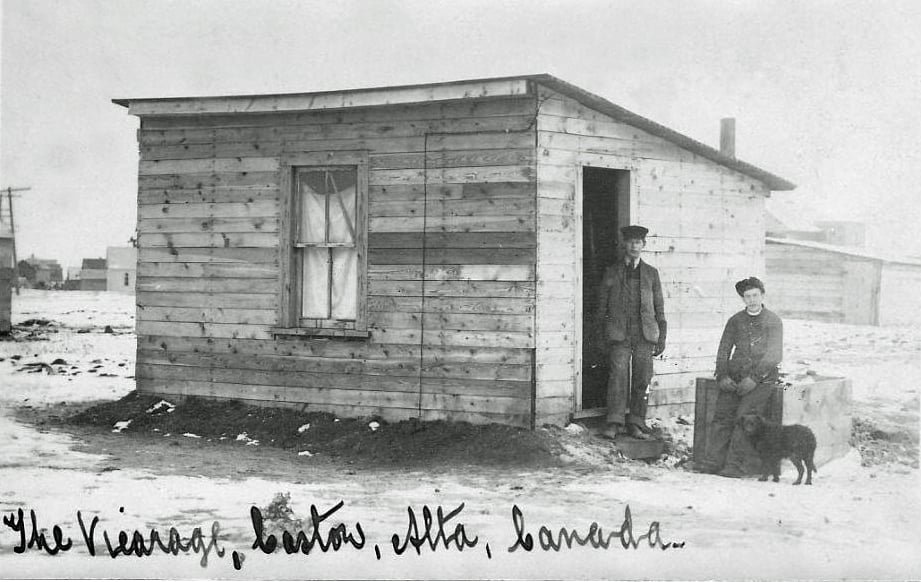
Reverend Holdom at his "Vicarage", 1910
The All Saints' Church is part of the Castor & District Museum Society.

The Castor Pharmacy Museum is located in the Town of Castor, Alberta. At the turn of the century there were many small towns that bubbled up across the prairies as millions of settlers established homesteads. In virtually all of the towns, one of the first businesses to locate was a drug store. Often before there was a physician or a hospital there was a pharmacy with a druggist, often trained by apprenticeship.
Early pharmacists provided patent and prescription medication to the sick, stocked veterinary medicine and even acted as a veterinarian, sold a wide range of general merchandise: perfume, cosmetics, china, confectionary, gift ware, chemicals, spices and poisons. There wasn't enough business in medication alone to support a pharmacy. Because they carried a wide range of merchandise, they had a lot of customers. As the people gathered to shop and visit, the stores served as a social centre for the community, especially if they had a soda fountain.
Pharmacists were respected and had the trust of the people. They were often leaders in the community. Their dedication and commitment shaped the image of Pharmacy that continues to this day as the "most respected" profession. It was in this context that the decision was made to create a pharmacy museum in a rural setting to reflect the dedicated work and contribution of these early pharmacists.
Museum Description
The museum is representative of an early turn of the century Western Canadian pharmacy. Part of the charm and appeal is that it could be moved to just about any small town in Western Canada where it would be as representative there, as it is in Castor. Attempts have been made to make the pharmacy interesting to people of all ages. Farmers and ranchers will find a veterinary section while ladies will have; cabinets of cosmetics and toiletries, a baby cabinet, an assortment of general merchandise that was sold in the 1920's. Children will have an opportunity to see candy and chocolates.
Pharmacists will be interested in the excellent collection of artifacts, jars, books, pamphlets and products. These items all reflect an era of pharmaceutical history. This is a very large collection with some unique collections of narcotic jars and calendars. Cabinets of patent medicines from the 1950's back to 1900 will evoke memories of former treatments used by families. Old familiar company names such as: Nyal, Chamberlains, Davis and Lawrence, Wampole, Na-Dru-Co, Rexall and many more are featured.
The collection of narcotic and controlled drug bottles was originally collected by the first narcotic inspector in Alberta, David Ritchie. He spent a large part of his career destroying and disposing of old and outdate narcotics. As a hobby he began collection some of the empty bottles and containers. These were cleaned and sorted by company into a large collection of over 1000 pieces that he contributed to the Castor Museum. There are bottles for opium powder, cocaine, morphine, cannabis, americanus, lead and mercury products. There are hundreds of unique and interesting drug products made by companies that are long gone. It is a treasure trove of history begging for research.
Dingbat calendars were issued yearly by the Charles E. Frosst company, an early Canadian manufacturer. The little "Dingbat" figures were featured each year in some aspect of health care, usually reflecting current issues or interests. The collection of calendars from 1915 to 1995 was compiled by M. J. Bain and donated to the museum. This is almost a complete calendar collection and an icon of Canadian pharmacy history. The Pharmaceutical Manufacturers Association of Canada ruled in 1991 that the calendars violated marketing practices regulations and the calendars were soon phased out despite pleas from pharmacists across Canada, including M. J. Bain in Castor (correspondence on display). In the history of Pharmacy we even have room for political correctness.
Bottles, books, pamphlets, advertisements and glassware from over 100 pharmacies all over British Columbia and Alberta represent over 5000 articles. This is a storehouse of enormous interest.
History of the Castor Pharmacy
In 1909 Gordon Souch operated a pharmacy in Williston, but when the railroad come through it was several miles further North than expected so the pharmacy was moved to Castor. The next year, in 1910 there were two pharmacies in the newly incorporated town of Castor, Souch's and "Brown, My Druggist" operated by George L. Brown.
Souch sold to W. Buckham and C.P. Johnson in 1912 and Castor Drug Company was born. That same year S.L. Dorland purchased Brown's and operated as Dorland's Drug. This state of affairs did not last long. A chain from Calgary, McDermid Drug Co. bought both stores in 1914 and combined them into the Dorland location. At the time McDermid's was one of the largest chains in Alberta with stores in Calgary, Lacombe, Carstairs and Castor. McDermid's in Alberta during the period 1914 to 1944 were innovative and the company became known for expert photo finishing in Calgary. They were also a training ground for some well known Alberta pharmacists. Mr. Acton managed the Dorland store in Castor until 1926 when he transferred to High River. Mr. Vickerson worked in the store from 1924 to 1930 then moved to McDermid's in Lacombe until he established his own pharmacy in Lacombe. H.R. Lackey managed from 1930 to 1944 and then left for Killam, Alberta. In 1935 Mike Bain from Castor began an apprenticeship under Mr. Lackey then studies Pharmacy at the University of Alberta, graduating in 1940.
The store was sold to Stan McLuhan in 1944 and operated as McLuhan Rexall Drug Store. In turn it was sold to Mike J. Bain and his brother Patrick F. Bain who operated as Castor Drug Store until 1977. From 1977 to 2008 the pharmacy was owned and operated by Mike Bain Jr., a period of 31 years. In 2008 the pharmacy was sold to Randy Kary, a long time employee of Castor Drug Store.
The building was constructed in 1921 after a fire destroyed the original building. It was built on an adjoining lot. This served as Castor's drug store until 1986 when a new 8,000 sq. ft. building was erected. The original building was closed and retained as a storage building. It is now the Castor Pharmacy Museum.
Many of the old cabinets and counters have been rescued and refurbished by Mike and Wendy Bain as a labour of love.
Pharmacy Operating Procedures
For many years the pharmacy was operated according to these precepts.
1. The store never closed - you responded to all calls at all hours, from vet products at 6 AM and 10:30 PM calls for "children's Aspirin".
2. A child's prescription is always dispensed and put on "credit", regardless of how small the chance of payment was or how large the account already was.
3. Adult prescriptions were always dispensed in "necessary" - service was NEVER withheld.
4. Phone calls to the house were always taken - even Sundays (in a time when ALL stores were closed).
5. Community service was a responsibility that went along with your position - church, school, social, hospital, and government.
The Castor Pharmacy Museum
5010 - 50 Ave.
Box 640, Castor, Alberta T0C 0X0
mhbain@telusplanet.net 403-882-3356 or 403-741-6202
 click here.
click here. 




